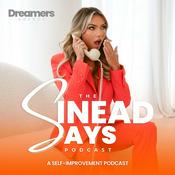Available Episodes
5 of 438
- 437. Atrial Fibrillation: The Diagnosis and Management of Atrial Flutter with Dr. Joshua CooperIn this episode, the CardioNerds (Dr. Naima Maqsood, Dr. Akiva Rosenzveig, and Dr. Colin Blumenthal) are joined by renowned educator in electrophysiology, Dr. Joshua Cooper, to discuss everything atrial flutter; from anatomy and pathophysiology to diagnosis and management. Dr. Cooper’s expert teaching comes through as Dr. Cooper vividly describes atrial anatomy to provide the foundational understanding to be able to understand why management of atrial flutter is unique from atrial fibrillation despite their every intertwined relationship. A foundational episode for learners to understand atrial flutter as well as numerous concepts in electrophysiology. Audio editing for this episode was performed by CardioNerds intern Dr. Bhavya Shah. CardioNerds Atrial Fibrillation PageCardioNerds Episode PageCardioNerds AcademyCardionerds Healy Honor Roll CardioNerds Journal ClubSubscribe to The Heartbeat Newsletter!Check out CardioNerds SWAG!Become a CardioNerds Patron! Pearls "The biggest mistake is failure to diagnose”. Atrial flutter, especially with 2:1 conduction, is commonly missed in both inpatient and outpatient settings so look carefully at that 12-lead EKG so you can mitigate the stroke and tachycardia induced cardiomyopathy risk Decremental conduction of the AV node makes it more challenging to rate control atrial flutter than atrial fibrillation Catheter Ablation is the first line treatment for atrial flutter and is highly successful, but cardioversion can be utilized as well prior to pursuing ablation in some cases. Class I AADs like propafenone and flecainide may stability the atrial flutter circuit by slowing conduction and thus may worsen the arrhythmia. Therefore, the preferred anti-arrhythmic medication in atrial flutter are class III agents. Atrial flutter can be triggered by firing from the left side of the heart, so in patients with both atrial fibrillation and flutter, ablating atrial fibrillation makes atrial flutter less likely to recur. BONUS PEARL: Dr. Cooper’s youtube video on atrial flutter is a MUST SEE! Notes Notes: Notes drafted by Dr. Akiva Rosenzveig What are the distinguishing features of atrial fibrillation and flutter? Atrial flutter is an organized rhythm characterized by a wavefront that continuously travels around the same circuit leading to reproducible P-waves on surface EKG as well as a very mathematical and predictable relationship between atrial and ventricular activity Atrial fibrillation is an ever changing, chaotic rhythm that consists of small local circuits that interplay off each other. Consequently, no two beats are the same and the relationship between the atrial activity and ventricular activity is unpredictable leading to an irregularly irregular rhythm What are common atrial flutter circuits? Cavo-tricuspid isthmus (CTI)-dependent atrial flutter is the most common type of flutter. It is characterized by a circuit that circumnavigates the tricuspid valve. Typical atrial flutter is characterized by the circuit running in a counterclockwise pattern up the septum, from medial to lateral across the right atrial roof, down the lateral wall, and back towards the septum across the floor of the right atrium between the IVC and the inferior margin of the tricuspid valve i.e. the cavo-tricuspid isthmus. Surface EKG will show a gradual downslope in leads II, III, and AvF and a rapid rise at end of each flutter wave. Atypical CTI-dependent flutter follows the same route but in the opposite direction (clockwise). Therefore, we will see positive flutter waves in the inferior leads Mitral annular flutter is more commonly seen in atrial fibrillation patients who’ve been treated with ablation leading to scarring in the left atrium. Roof-dependent flutter is characterized by a circuit that travels around left atrium circumnavigating a lesion (often from prior ablation), traveling through the left atrial roof, down the posterior wall, and around the pulmonary veins Surgical/scar/incisional flutter is seen in people with a history of prior cardiac surgery and have iatrogenic scars in right atrium due to cannulation sites or incisions How does atrial flutter pharmacologic management differ from other atrial arrhythmias? The atrioventricular (AV) node is unique in that the faster it is stimulated, the longer the refractory period and the slower it conducts. This characteristic is called decremental conduction. In atrial fibrillation, the atrial rate is so fast that the AV node becomes overwhelmed and only lets some of those signals through to the ventricles creating an irregular tachycardia but at lower rates. In atrial flutter, the atrial rate is slower, therefore the AV node has more capability to conduct allowing for higher ventricular rates. Therefore, to achieve rate control one will need a higher dose of AV blocking medications. Atrial tachycardia may require even higher doses due to the increased ability of the AV node to conduct, as the atrial rates are slower than in atrial flutter. Sodium channel blockers (Class I) such as flecainide and propafenone slow wavefront propagation, making it easier for the AV node to handle the atrial rates. This will end up leading to increased ventricular rates which can be dangerously fast. That is why AV nodal blockers should be used in conjunction with flecainide and propafenone. What is the role of cardioversion in atrial flutter management? Due to high success rate with atrial flutter ablation, ablation is the first line treatment. However, sometimes cardioversion may be utilized in patients depending on how symptomatic they are and how long it will take to get an ablation. Cardioversion may also be utilized preferentially when the atrial flutter was triggered by infection or cardiac surgery to see if it will come back. If cardioversion is pursued, the patient will need to be anticoagulated due to the stroke risk after the procedure due to post-conversion stunning. How effective is atrial flutter ablation? The landmark Natale et al study in 2000 demonstrated 80% success rate after radiofrequency ablation as compared to 36% in patients on anti-arrhythmic therapy. The LADIP study in 2006 further corroborated these findings. Contemporary data shows above 90% success rate of atrial flutter ablation. In patients who have had both atrial fibrillation and atrial flutter, most electrophysiologists would ablate both. However, in patients with atrial fibrillation, the atrial flutter usually is initiated by trigger spots firing in the left atrium. Once the atrial fibrillation is ablated, the flutter will become less likely. Therefore, there are those who say there’s no need to ablate the flutter circuit as well. Alternatively, if a patient has severe comorbidities and/or is high risk for ablation, one may consider performing the atrial flutter ablation only since atrial flutter is harder to manage medically compared with atrial fibrillation. How do you manage atrial flutter in the acute inpatient setting? In the inpatient setting, electrical cardioversion is often limited by blood pressure and the hypotensive effects of the sedatives required. If one is awake and too hypotensive, chemical cardioversion can be pursued. The most effective anti-arrhythmic for this is ibutilide. Amiodarone is not effective for acute cardioversion. Since ibutilide prolongs refractoriness in atrial and ventricular tissue, there’s a risk of long QT induced torsades de pointes. Pretreating with magneisum reduces the risk to 1-2%. References Jolly WA, Ritchie WT. Auricular flutter and fibrillation. 1911. Ann Noninvasive Electrocardiol. 2003;8(1):92-96. doi:10.1046/j.1542-474x.2003.08114.x McMichael J. History of atrial fibrillation 1628-1819 Harvey - de Senac - Laënnec. Br Heart J. 1982;48(3):193-197. doi:10.1136/hrt.48.3.193 Lee KW, Yang Y, Scheinman MM; University of Califoirnia-San Francisco, San Francisco, CA, USA. Atrial flutter: a review of its history, mechanisms, clinical features, and current therapy. Curr Probl Cardiol. 2005;30(3):121-167. doi:10.1016/j.cpcardiol.200 2023 ACC/AHA/ACCP/HRS Guideline for the Diagnosis and Management of Atrial Fibrillation: A Report of the American College of Cardiology/American Heart Association Joint Committee on Clinical Practice Guidelines. Circulation. 2024;149(1):e167. doi:10.1161/ Cosío F. G. (2017). Atrial Flutter, Typical and Atypical: A Review. Arrhythmia & electrophysiology review, 6(2), 55–62. https://doi.org/10.15420/aer.2017.5.2 https://www.escardio.org/Journals/E-Journal-of-Cardiology-Practice/Volume-11/Atrial-flutter-common-and-main-atypical-forms Natale A, Newby KH, Pisanó E, et al. Prospective randomized comparison of antiarrhythmic therapy versus first-line radiofrequency ablation in patients with atrial flutter. J Am Coll Cardiol. 2000;35(7):1898-1904. doi:10.1016/s0735-1097(00)00635-5 Da Costa A, Thévenin J, Roche F, et al. Results from the Loire-Ardèche-Drôme-Isère-Puy-de-Dôme (LADIP) trial on atrial flutter, a multicentric prospective randomized study comparing amiodarone and radiofrequency ablation after the first episode of symptomatic atrial flutter. Circulation. 2006;114(16):1676-1681. doi:10.1161/CIRCULATIONAHA.106.638395 https://www.acc.org/Membership/Sections-and-Councils/Fellows-in-Training-Section/Section-Updates/2015/12/15/16/58/Atrial-Fibrillation#:~:text=The%20first%20'modern%20day'%20account,in%20open%20chest%20animal%20models.&text=In%201775%2C%20William%20Withering%20first,(purple%20foxglove)%20in%20AFib.--------30:07
- 436. Heart Failure: Pre-Heart Transplant Evaluation and Management with Dr. Kelly SchlendorfIn this episode, the CardioNerds (Dr. Rachel Goodman, Dr. Shazli Khan, and Dr. Jenna Skowronski) discuss a case of AMI-shock with a focus on listing for heart transplant with faculty expert Dr. Kelly Schlendorf. We dive into the world of pre-transplant management, discuss the current allocation system, and additional factors that impact transplant timing, such as sensitization. We conclude by discussing efforts to increase the donor pool. Audio editing for this episode was performed by CardioNerds Intern, Julia Marques Fernandes. Enjoy this Circulation 2022 Paths to Discovery article to learn about the CardioNerds story, mission, and values. CardioNerds Heart Success Series PageCardioNerds Episode PageCardioNerds AcademyCardionerds Healy Honor Roll CardioNerds Journal ClubSubscribe to The Heartbeat Newsletter!Check out CardioNerds SWAG!Become a CardioNerds Patron! Pearls The current iteration of heart allocation listing is based on priority, with status 1 being the highest priority. The are multiple donor and recipient characteristics to consider when listing a patient for heart transplantation and accepting a heart offer. Desensitization is an option for patients who need heart transplantation but are highly sensitized. Protocols vary by center. Acceptance of DCD hearts is one of many efforts to expand the donor pool Notes Notes: Notes drafted by Dr. Rachel Goodman Once a patient is determined to be a candidate for heart transplantation, how is priority determined? The current iteration of heart listing statuses was implemented in 2018. Priority is determined by acuity, with higher statuses indicating higher acuity and given higher priority. Status 1 is the highest priority status, and Status 7 is inactive patients. (1,2) What criteria should be considered in organ selection when listing a patient for heart transplant? Once it is determined that a patient will be listed for heart transplantation, there are certain criteria that should be assessed. These factors may impact pre-transplant care and/or donor matching (3). (1) PVR (2) Height/weight (3) Milage listing criteria (4) Blood typing/cPRA/HLA typing What is desensitization and why would it be considered? Desensitization is an attempt to reduce or remove anti-HLA antibodies in the recipient. It is done to increase the donor pool. In general, desensitization is reserved for patients who are highly sensitized. Desensitization protocols vary by transplant center, and some may opt against it. When considering desensitization, it is important to note two key things: first, there is no promise that it will work, and second desensitization involves the use of immunosuppressive agents, thereby putting patients at increased risk of infection and cytopenia. (4) Can you explain DCD and DBD transplant? DBD: donor that have met the requirements for legal definition of brain death. DCD: donors that have not met the legal definition of brain death but have been determined to have circulatory death. Because the brain death criteria have not been met, organ recovery can only take place once death is confirmed based on cessation of circulatory and respiratory function. Life support is only withdrawn following declaration of circulatory death—once the heart has stopped beating and spontaneous respirations have stopped. (5,6) References 1: Maitra NS, Dugger SJ, Balachandran IC, Civitello AB, Khazanie P, Rogers JG. Impact of the 2018 UNOS Heart Transplant Policy Changes on Patient Outcomes. JACC Heart Fail. 2023;11(5):491-503. doi:10.1016/j.jchf.2023.01.009 2: Shore S, Golbus JR, Aaronson KD, Nallamothu BK. Changes in the United States Adult Heart Allocation Policy: Challenges and Opportunities. Circ Cardiovasc Qual Outcomes. 2020;13(10):e005795. doi:10.1161/CIRCOUTCOMES.119.005795 3: Copeland H, Knezevic I, Baran DA, et al. Donor heart selection: Evidence-based guidelines for providers. J Heart Lung Transplant. 2023;42(1):7-29. doi:10.1016/j.healun.2022.08.030 4: Kittleson MM. Management of the sensitized heart transplant candidate. Curr Opin Organ Transplant. 2023;28(5):362-369. doi:10.1097/MOT.0000000000001096 5: Kharawala A, Nagraj S, Seo J, et al. Donation After Circulatory Death Heart Transplant: Current State and Future Directions. Circ Heart Fail. 2024;17(7):e011678. doi:10.1161/CIRCHEARTFAILURE.124.011678 6: Siddiqi HK, Trahanas J, Xu M, et al. Outcomes of Heart Transplant Donation After Circulatory Death. J Am Coll Cardiol. 2023;82(15):1512-1520. doi:10.1016/j.jacc.2023.08.006--------32:11
- 435. Atrial Fibrillation: Chronic Management of Atrial Fibrillation with Dr. Edmond CroninCardioNerds (Dr. Kelly Arps, Dr. Naima Maqsood, and Dr. Elizabeth Davis) discuss chronic AF management with Dr. Edmond Cronin. This episode seeks to explore the chronic management of atrial fibrillation (AF) as described by the 2023 ACC/AHA/ACCP/HRS Guideline for the Diagnosis and Management of Atrial Fibrillation: A Report of the American College of Cardiology/American Heart Association Joint Committee on Clinical Practice Guidelines. The discussion covers the different AF classifications, symptomatology, and management including medications and invasive therapies. Importantly, the episode explores current gaps in knowledge and where there is indecision regarding proper treatment course, as in those with heart failure and AF. Our expert, Dr. Cronin, helps elucidate these gaps and apply guideline knowledge to patient scenarios. Audio editing for this episode was performed by CardioNerds intern Dr. Bhavya Shah. CardioNerds Atrial Fibrillation PageCardioNerds Episode PageCardioNerds AcademyCardionerds Healy Honor Roll CardioNerds Journal ClubSubscribe to The Heartbeat Newsletter!Check out CardioNerds SWAG!Become a CardioNerds Patron! Pearls Review the guidelines- Catheter ablation is a Class I recommendation for select patient groups Appropriately recognize AF stages- preAF conditions, symptomatology, classification system (paroxysmal, persistent, long-standing persistent, permanent) Be familiar with the EAST-AFNET4 trial, as it changed the approach of rate vs rhythm control Understand treatment approaches- lifestyle modifications, management of comorbidities, rate vs rhythm control medications, cardioversion, ablation, pulmonary vein isolation, surgical MAZE Sympathize with patients- understand their treatment goals Notes Notes: Notes drafted by Dr. Davis. What are the stages of atrial fibrillation? The stages of AF were redefined in the 2023 guidelines to better recognize AF as a progressive disease that requires different strategies at the different therapies Stage 1 At Risk for AF: presence of modifiable (obesity, lack of fitness, HTN, sleep apnea, alcohol, diabetes) and nonmodifiable (genetics, male sex, age) risk factors associated with AF Stage 2 Pre-AF: presence of structural (atrial enlargement) or electrical (frequent atrial ectopy, short bursts of atrial tachycardia, atrial flutter) findings further pre-disposing a patient to AF Stage 3 AF: patient may transition between these stages Paroxysmal AF (3A): intermittent and terminates within ≤ 7 days of onset Persistent AF (3B): continuous and sustained for > 7 days and requires intervention Long-standing persistent AF (3C): continuous for > 12 months Successful AF ablation (3D): freedom from AF after percutaneous or surgical intervention Stage 4 Permanent AF: no further attempts at rhythm control after discussion between patient and clinician The term chronic AF is considered obsolete and such terminology should be abandoned What are common symptoms of AF? Symptoms vary with ventricular rate, functional status, duration, and patient perception May present as an embolic complication or heart failure exacerbation Most commonly patients report palpitations, chest pain, dyspnea, fatigue, or lightheadedness. Vague exertional intolerance is common Some patients also have polyuria due to increased production of atrial natriuretic peptide Less commonly can present as tachycardia-associated cardiomyopathy or syncope Cardioversion into sinus rhythm may be diagnostic to help determine if a given set of symptoms are from atrial fibrillation to help guide the expected utility of more aggressive rhythm control strategies. What are the current guidelines regarding rhythm control and available options? COR-LOE 1B: In patients with reduced LV function and persistent (or high burden) AF, a trial of rhythm control should be recommended to evaluate whether AF is contributing to the reduced LV function COR-LOE 2a-B: In patients with reduced LV function and persistent (or high burden) AF, a trial of rhythm control should be recommended to evaluate whether AF is contributing to the reduced LV function. In patients with a recent diagnosis of AF (<1 year), rhythm control can be useful to reduce hospitalizations, stroke, and mortality. In patients with AF and HF, rhythm control can be useful for improving symptoms and improving outcomes, such as mortality and hospitalizations for HF and ischemia. In patients with AF, rhythm-control strategies can be useful to reduce the likelihood of AF progression. COR-LOE 2b-C: In patients with AF where symptoms associated with AF are uncertain, a trial of rhythm control (eg, cardioversion or pharmacological therapy) may be useful to determine what if any symptoms are attributable to AF. COR-LOE 2b-B: In patients with AF, rhythm-control strategies may be useful to reduce the likelihood of development of dementia or worsening cardiac structural abnormalities. While both rate and rhythm control can improve AF symptoms, several studies (such as AF-CHF) show improved quality of life with rhythm control EAST-AFNET 4 was significant in that it showed rhythm control was associated with a 25% reduction in the combined endpoint of mortality rate, stroke, and hospitalizations due to HF or ACS Acute rhythm control can be achieved with electrical or pharmacological cardioversion. Electrical is more effective and faster than pharmacological and is preferred for patients with hemodynamic instability attributable to AF. However, both approaches involved considerations for anticoagulation and thromboembolic risk. Pharmacologic options for cardioversion include ibutilide, amiodarone, flecainide, propafenone, procainamide, dofetilide, and sotalol. COR-LOE 1-A: In patients with symptomatic AF in whom antiarrhythmic drugs have been ineffective, contraindicated, not tolerated or not preferred, and continued rhythm control is desired, catheter ablation is useful to improve symptoms. AF ablation is also a suitable first-line option in some patients with paroxysmal AF to reduce recurrence and burden. Patient selection is important. Younger patients, those with minimal atrial enlargement, less myocardial fibrosis, and less persistent forms are more likely to have successful ablations, meaning less likely to have recurrence of AF after ablation. HFrEF patients derive greater benefit than others from AF ablation in terms of improved functional status, LV function, and cardiovascular outcomes Surgical ablation can be considered in those undergoing cardiac surgery for some other etiology such as valve surgery or CABG and is associated with increased survival, but some risk of pacemaker placement and renal dysfunction How would you monitor for AF recurrence in post-ablation or cardioversion? Is there a role for monitoring in every patient? Cardiac monitoring may be advised to AF patients for various reasons, such as for detecting recurrences, screening, or response to therapy Long-term surveillance to detect recurrent AF can be beneficial and can be accomplished by various modalities, including wearable devices, smart watches, random monitoring (Holter, event, mobile telemetry), and implantable loop recorders. This is especially helpful in those who had AF-induced cardiomyopathy, especially if their LVEF recovered after rate/rhythm control. This is a population in whom recurrence of AF would want to be promptly noted and addressed. Loop recorders can also be helpful in detecting subclinical AF or in patients with stroke or TIA of undetermined cause (COR-LOE 2a-B) What AF burden warrants intervention? It is important to recognize that AF is a chronic condition and tends to recur, so treatment often is focused on reducing risk of recurrence Patient-clinician shared decision making is important when deciding when/how to intervene, as there is no cut-off for “significant” burden (COR-LOE 1-B) What are some options for antiarrhythmic drugs and their characteristics? Antiarrhythmic drugs are reasonable for long-term maintenance of sinus rhythm for patients with AF who are not candidates for, or decline, catheter ablation, or who prefer antiarrhythmic therapy Amiodarone can be used in patients with or without HFrEF, as opposed to many other anti-arrhythmics that are (relatively) contraindicated in HFrEF or should be used with caution in such patients, such as flecainide, propafenone, dronedarone, and sotalol. However, due to its adverse effects and multiple drug interactions, is should be used only in patients in which other antiarrhythmic drugs are contraindications, ineffective, or not preferred. Dofetilide can also be used in patients with HFrEF. In patients on amiodarone, labs should be checked regularly for thyroid, liver and kidney functions. There is also a role for pulmonary function testing and chest x-rays to monitor for pulmonary fibrosis, but frequency is not clearly established. It should be noted that amiodarone-induced lung toxicity occurs between 6 months and 2 years of use. Flecainide is well tolerated, but is contraindicated in patients with significant coronary artery disease and possibly structural heart disease in general. It can also lead to the development of atrial flutter. Dofetilide and sotalol require regular renal function monitoring and QTC monitoring When should AV node ablation (AVNA) be considered? In patients with AF and uncontrolled rapid ventricular response refractory to rate-control medications (who are not candidates for or in whom rhythm control has been unsuccessful), AVNA can be useful to improve symptoms and QOL (COR-LOE 2a-B) AVNA is effective for rate control and does not require continuation of medications; however,--------47:54
- 434. Heart Failure: Advanced Therapies Evaluation with Dr. Michelle KittlesonCardioNerds kicks off its advanced therapies series with Chair of the CardioNerds Heart Failure Council, Dr. Jenna Skowronski, co-chair of the series, Dr. Shazli Khan, and Episode FIT lead, Dr. Jason Feinman. In this first episode, they discuss the process of advanced therapies evaluation with Dr. Michelle Kittleson, Professor of Medicine and Director of Education in Heart Failure and Transplantation at Cedars-Sinai. In this case-based discussion, they cover the signs and symptoms of end-stage heart failure, the initial management strategies, and the diagnostic workup required when considering advanced therapies. Importantly, they discuss the special considerations for pursuing left-ventricular assist device (LVAD) versus heart transplantation as well as the multidisciplinary, team-based approach needed when advanced therapies are indicated. Notes were drafted by Dr. Shazli Khan. Audio editing for this episode was performed by CardioNerds Intern, Julia Marques Fernandes. Enjoy this Circulation 2022 Paths to Discovery article to learn about the CardioNerds story, mission, and values. CardioNerds Heart Success Series PageCardioNerds Episode PageCardioNerds AcademyCardionerds Healy Honor Roll CardioNerds Journal ClubSubscribe to The Heartbeat Newsletter!Check out CardioNerds SWAG!Become a CardioNerds Patron! Pearls Guideline-directed medical therapy (GDMT) is indicated in all heart failure patients and improves survival, but progressive symptoms and intolerance to GDMT can be warning signs of disease progression. The I-NEED-HELP mnemonic is an excellent reference when considering referral for advanced therapies (Figure). Management of acute decompensation includes diuretics and possible inotropic support. The inotropic agent used should be whichever best suits your specific patient. Milrinone may result in more hypotension, whereas dobutamine may result in more tachycardia. Tachycardic and normotensive patients may do better with milrinone, while hypotensive patients with normal heart rates may do better with dobutamine. Notably, DoReMi found no difference between milrinone and dobutamine for patients with cardiogenic shock. The initial diagnostic evaluation includes an echocardiogram, right heart catheterization (RHC), and often cardiopulmonary exercise testing (CPET) to objectively assess the status of the heart. Comprehensive labs, imaging and cancer screening are also needed to assess all other organs. When making the decision to pursue advanced therapies, always ask: Is the heart sick enough? Is the rest of the body well enough? These two questions provide a framework to guide if patients are optimal candidates for transplant versus LVAD. The advanced therapies evaluation is a team sport! Patients will meet not only with advanced heart failure cardiologists, but also cardiac surgeons, psychiatrists, social workers, nutritionists and pharmacists. All team members are of critical value in the process. Notes 1.) What are the key features of advanced cardiomyopathy, and when should providers consider referral for advanced therapies? Advanced cardiomyopathy may present as recurrent hospitalizations for decompensated heart failure, intolerance to GDMT with symptomatic orthostasis and hypotension, and progressive symptoms of heart failure despite medical therapy. The I-NEED-HELP mnemonic is a helpful tool to identify patients at risk of heart failure and is defined as follows: Need for Inotropic support, New York Heart Association (NYHA) Class IV symptoms, End-Organ Dysfunction, Ejection fraction <20%, Defibrillator shocks for ventricular arrhythmias, Recurrent HF hospitalizations, Escalating diuretic dose, Low blood pressure and Progressive intolerance of GDMT. See the Figure designed by Dr. Gurleen Kaur. When patients demonstrate any of the above warning signs, they should be referred to advanced heart failure specialists for consideration of advanced therapies. 2.) What diagnostic testing is pursued when working up patients for advanced therapies? How does this workup differ whether you are in the inpatient or outpatient setting? Work-up generally answers two key questions: is the heart sick enough and is the rest of the body well enough? Workup includes an echocardiogram that may show specific features concerning for end-stage heart failure (EF <20%, dilated and remodeled left ventricle, reduced right ventricular function, etc.). A RHC provides information on the filling pressures of the heart for management in the acute setting, but also helps give an objective measure of the cardiac output to assess how sick the heart is. Importantly the RHC also provides key information on the presence of pulmonary hypertension. Obtaining a comprehensive metabolic panel provides valuable information on end-organ dysfunction, as kidney or liver abnormalities are suggestive of worsening disease. Outpatients presenting for referral may also undergo CPET as an objective confirmation of decreased functional capacity. Typically, a peak VO2 max of <14 mL/kg/min is indicative of advanced disease. CT imaging, as well as other cancer screening tools, may be employed to ensure there is no systemic disease that would prohibit advanced therapies. 3.) Who makes up the multidisciplinary advanced therapies team? The ACC/AHA/HFSA 2022 guidelines for heart failure support using a multidisciplinary team approach in managing HF. This collaborative care model has been shown to reduce hospital admissions and healthcare expenses while enhancing patient adherence to self-care practices and recommended medical treatments. The multidisciplinary team consists of cardiologists, cardiac surgeons, advanced practice providers, psychiatrists, pharmacists, social workers, nutritionists, and other specialists. 4.) What are the medical factors to consider when deciding between transplant versus LVAD, and what social determinants of health play a role? The medical evaluation and workup done during the advanced therapies evaluation help answer two crucial questions: Is the heart sick enough? Is the rest of the body well enough? All patients should be assessed for extracardiac disease that may impact survival after advanced therapies. While selection between transplant versus LVAD varies by program and institution, general principles considered include the allocation system and regional wait times, patient’s age, and extracardiac comorbidities. Generally, patients being considered for heart transplantation should be devoid of conditions that have a five-year survival of <70% or a ten-year survival of <50%. This is also because patients undergoing organ transplantation require immunosuppressive medications, which may further exacerbate their other systemic conditions. Social support and internal motivation also play a role, as it is important for patients to attend multiple follow-up appointments and maintain strict adherence to their immunosuppressive medications. Graphic - Stage D (Advanced) Heart Failure Designed by Dr. Gurleen Kaur References Morris AA, Khazanie P, Drazner MH, et al; American Heart Association Heart Failure and Transplantation Committee of the Council on Clinical Cardiology; Council on Arteriosclerosis, Thrombosis and Vascular Biology; Council on Cardiovascular Radiology and Intervention; Council on Hypertension. Guidance for timely and appropriate referral of patients with advanced heart failure: a scientific statement from the American Heart Association. Circulation. 2021;144(15):e238-e250. doi:10.1161/CIR.0000000000001016 https://www.ahajournals.org/doi/10.1161/CIR.0000000000001016 Truby LK, Rogers JG. Advanced heart failure: epidemiology, diagnosis, and therapeutic approaches. JACC Heart Fail. 2020;8(7):523-536. doi:10.1016/j.jchf.2020.01.014 https://www.sciencedirect.com/science/article/pii/S2213177920302080?via%3Dihub Heidenreich PA, Bozkurt B, Aguilar D, Allen LA, Byun JJ, Colvin MM, Deswal A, et al; ACC/AHA Joint Committee Members. 2022 AHA/ACC/HFSA guideline for the management of heart failure: a report of the American College of Cardiology/American Heart Association Joint Committee on Clinical Practice Guidelines. Circulation. 2022;145(18):e895-e1032. doi:10.1161/CIR.0000000000001063 https://www.ahajournals.org/doi/10.1161/CIR.0000000000001063 Guglin M, Zucker MJ, Borlaug BA, Breen E, Cleveland J, Johnson MR, Panjrath GS, et al; ACC Heart Failure and Transplant Member Section and Leadership Council. Evaluation for heart transplantation and LVAD implantation: JACC Council perspectives. J Am Coll Cardiol. 2020;75(12):1471-1487. doi:10.1016/j.jacc.2020.01.034 https://www.sciencedirect.com/science/article/pii/S0735109720304150?via%3Dihub--------14:01
- 433. The Evolution and Future of Cardio-Obstetrics with Dr. Afshan Hameed, Dr. Doreen DeFaria Yeh, Dr. Garima Sharma, and Dr. Rina MauricioIn this second episode of a collaborative series with the AHA Women in Cardiology (WIC) Committee, CardioNerds (Dr. Gurleen Kaur and Dr. Anna Radhakrishnan) are joined by four leading experts in Cardio-Obstetrics to explore this rapidly evolving field. Dr. Rina Mauricio (Director of Women's Cardiovascular Health and Cardio-Obstetrics at UT Southwestern Medical Center), Dr. Afshan Hameed (Director of Maternal Fetal Medicine and Cardio-Obstetrics at UC Irvine), Dr. Doreen DeFaria Yeh (Co-director of the MGH Cardiovascular Disease and Pregnancy Program), and Dr. Garima Sharma (Director of Women's Cardiovascular Health and Cardio-Obstetrics at Inova) define Cardio-Ob as encompassing not only care of women during pregnancy, but also the complex decision-making that extends through the preconception and postpartum periods. From counseling patients with pre-existing or congenital heart disease before pregnancy to managing cardiovascular health during pregnancy and after delivery, they trace how the field has developed in response to the urgent need to address maternal mortality. Listeners will gain valuable insight into the multidisciplinary teamwork, patient-centered decision-making, and advocacy that drive this field - along with the importance of expanding Cardio-Ob education for clinicians and trainees, and innovations and system-level changes shaping its future. Audio editing by CardioNerds academy intern, Grace Qiu. This episode was planned in collaboration with the AHA CLCD Women in Cardiology Committee with mentorship from Dr. Monika Sanghavi. The PA-ACC & CardioNerds Narratives in Cardiology PageCardioNerds Episode PageCardioNerds AcademyCardionerds Healy Honor Roll CardioNerds Journal ClubSubscribe to The Heartbeat Newsletter!Check out CardioNerds SWAG!Become a CardioNerds Patron!--------31:35
More Education podcasts
Trending Education podcasts
About Cardionerds: A Cardiology Podcast
Welcome to CardioNerds, where we bring you in-depth discussions with leading experts, case reports, and updates on the latest advancements in the world of cardiology. Tune in to expand your knowledge, sharpen your skills, and become a true CardioNerd!
Podcast websiteListen to Cardionerds: A Cardiology Podcast, The Comeback with Brenda Dennehy and many other podcasts from around the world with the radio.net app

Get the free radio.net app
- Stations and podcasts to bookmark
- Stream via Wi-Fi or Bluetooth
- Supports Carplay & Android Auto
- Many other app features
Get the free radio.net app
- Stations and podcasts to bookmark
- Stream via Wi-Fi or Bluetooth
- Supports Carplay & Android Auto
- Many other app features


Cardionerds: A Cardiology Podcast
Scan code,
download the app,
start listening.
download the app,
start listening.




























